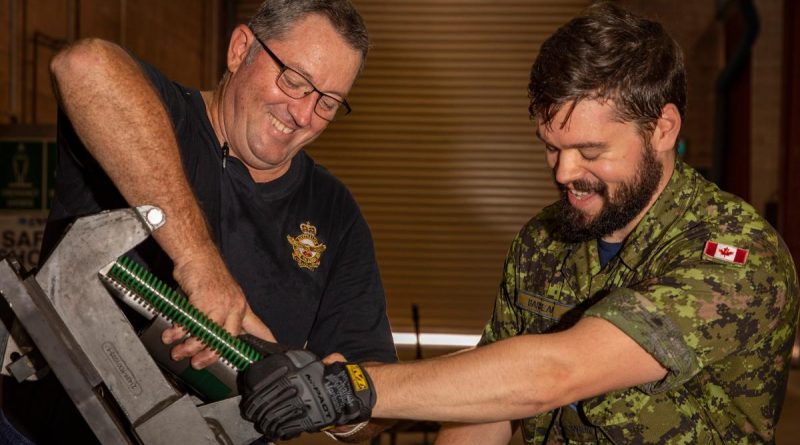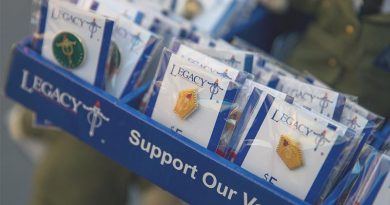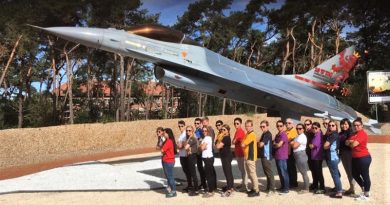Stopping jets in their tracks

With the influx of fast jets from around the world at Exercise Pitch Black, the mechanical equipment operations and maintenance section at RAAF Base Darwin is busier than ever.
CAPTION: RAAF ground support equipment technician Corporal James Harding, left, and Royal Canadian Air Force aircraft arrestor systems technician Corporal Evan Barbeau maintain a BAK arrestor arm. Flight Lieutenant Jessica Winnall. Photo by Leading Aircraftwoman Annika Smit.
The team is responsible for the maintenance and operation of aircraft arrestor cables – 3.5-tonne energy absorbers that can catch and stop aircraft weighing up to 40 tonnes and travelling about 200km/h.
These lifesaving devices lie in wait, ready to spring into action if required.
Corporal James Harding, a ground support equipment technician at No. 13 Squadron, said he enjoyed putting the new system in action.
“Our system out here is very new. It only got finished last year, and we are different to a lot of bases, as we have 20 arms across the runway, so it is bigger than anywhere else in Australia,” Corporal Harding said.
“The upgrade has meant that the pits are a lot more user-friendly and safe.”
With temperatures in the mid-30s and over 70 aircraft flying each day of the exercise, every improvement makes the job a little easier.
Corporal Harding is appreciative said the culture of the Top End, with its “welcoming and relaxed” people, made working in the heat more enjoyable.
During exercise Pitch Black the extra work is supported by other nations, including Royal Canadian Air Force Corporal Evan Barbeau from No. 86 Airfield Systems and Utilities at 8 Wing Trenton, Ontario.
“It is great to work on this technology in different contexts,” Corporal Barbeau said.
“The coldest I have ever worked is minus 43 degrees Celsius, so here in Darwin is probably the hottest I have worked – it is quite a range – although it can get pretty hot in Canada too.
“More than the weather, it is great to see so many different fast jets, and to understand how they interact with our safety systems. To work on a brand new arrestor cable is also fun.”
.
.

.
.





